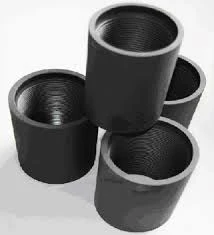- Afrikaans
- Albanian
- Amharic
- Arabic
- Armenian
- Azerbaijani
- Basque
- Belarusian
- Bengali
- Bosnian
- Bulgarian
- Catalan
- Cebuano
- Corsican
- Croatian
- Czech
- Danish
- Dutch
- English
- Esperanto
- Estonian
- Finnish
- French
- Frisian
- Galician
- Georgian
- German
- Greek
- Gujarati
- Haitian Creole
- hausa
- hawaiian
- Hebrew
- Hindi
- Miao
- Hungarian
- Icelandic
- igbo
- Indonesian
- irish
- Italian
- Japanese
- Javanese
- Kannada
- kazakh
- Khmer
- Rwandese
- Korean
- Kurdish
- Kyrgyz
- Lao
- Latin
- Latvian
- Lithuanian
- Luxembourgish
- Macedonian
- Malgashi
- Malay
- Malayalam
- Maltese
- Maori
- Marathi
- Mongolian
- Myanmar
- Nepali
- Norwegian
- Norwegian
- Occitan
- Pashto
- Persian
- Polish
- Portuguese
- Punjabi
- Romanian
- Russian
- Samoan
- Scottish Gaelic
- Serbian
- Sesotho
- Shona
- Sindhi
- Sinhala
- Slovak
- Slovenian
- Somali
- Spanish
- Sundanese
- Swahili
- Swedish
- Tagalog
- Tajik
- Tamil
- Tatar
- Telugu
- Thai
- Turkish
- Turkmen
- Ukrainian
- Urdu
- Uighur
- Uzbek
- Vietnamese
- Welsh
- Bantu
- Yiddish
- Yoruba
- Zulu
Understanding the Function and Purpose of a Bull Plug in Various Applications
Understanding Bull Plugs An Overview
In the realm of plumbing and construction, terminology can often seem overwhelming, especially for those who are not well-versed in the field. One such term that may arise is bull plug. Although it might not be a household term, the functionality and importance of bull plugs in various applications are noteworthy. This article delves into what a bull plug is, its uses, and why it’s essential in certain contexts.
What is a Bull Plug?
A bull plug, also known in some contexts as a blind plug, is a type of fitting commonly used in plumbing, piping, and industrial applications. Its primary function is to seal the end of a pipe or a fitting, effectively closing it off from the surrounding environment. Made from various materials such as brass, stainless steel, plastic, and iron, bull plugs are designed to withstand high pressures, making them reliable components in numerous systems.
The term bull plug is primarily used in the oil and gas industry, as well as in other industrial settings where fluid transport is critical. The name may derive from the fitting’s robust nature (bull suggesting strength) or from its design, which is often rounded or “bull-like” at the end.
Why Use Bull Plugs?
Bull plugs serve several critical purposes in conjunction with piping systems
1. Sealing Open Ends Bull plugs are used to close off the ends of pipes to prevent the ingress of contaminants, protect the internal surfaces, and maintain system integrity. This is crucial in systems carrying liquids or gases, where even the smallest leaks can lead to significant issues.
2. Pressure Maintenance In many applications, maintaining pressure is vital for system efficiency. Bull plugs help maintain this pressure by providing a tight seal, which is essential in preventing malfunctions or hazardous situations.
3. System Maintenance During maintenance or repairs of a piping system, bull plugs can be used to temporarily close off sections of the system, allowing other areas to remain operational. This feature is particularly useful in multi-line setups where not all lines need to be taken offline at once.
what is a bull plug

4. Complete Isolation In certain processes, isolating a section of a pipe for safety reasons is necessary. Bull plugs help to ensure that no fluid can escape the closed-off section, providing a safe working environment.
Installation and Considerations
Installing a bull plug is relatively straightforward, but it does require some knowledge and caution. Here are some key considerations when working with bull plugs
- Compatibility Ensure that the bull plug is compatible with the pipe material and size. Mismatched components can lead to leaks and system failure.
- Proper Sealing Use appropriate sealing methods, like thread sealants, to prevent leaks when installing a threaded bull plug. For welded plugs, ensure good welding practices to maintain a strong, leak-proof joint.
- Pressure Ratings Check the pressure rating of the bull plug to ensure it can handle the operational conditions of the piping system.
- Inspection and Maintenance Regularly inspect plugs for signs of wear or damage, especially in systems subjected to high stresses or corrosive environments.
Conclusion
Understanding what a bull plug is and its function within plumbing and piping systems is crucial for anyone involved in industrial or construction work. While it may not be the most glamorous component of a system, the bull plug plays a vital role in maintaining the integrity, safety, and efficiency of pipelines. By effectively sealing openings, maintaining pressure, and providing isolation during maintenance tasks, bull plugs contribute significantly to the smooth operation of many systems. Whether in a residential plumbing setup or a complex industrial environment, knowing how to utilize bull plugs properly can ensure better managing and operation of piping systems.
-
Tubing Pup Joints: Essential Components for Oil and Gas OperationsNewsJul.10,2025
-
Pup Joints: Essential Components for Reliable Drilling OperationsNewsJul.10,2025
-
Pipe Couplings: Connecting Your World EfficientlyNewsJul.10,2025
-
Mastering Oilfield Operations with Quality Tubing and CasingNewsJul.10,2025
-
High-Quality Casing Couplings for Every NeedNewsJul.10,2025
-
Boost Your Drilling Efficiency with Premium Crossover Tools & Seating NipplesNewsJul.10,2025







